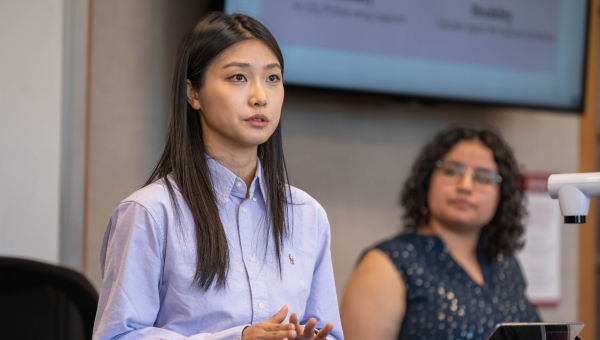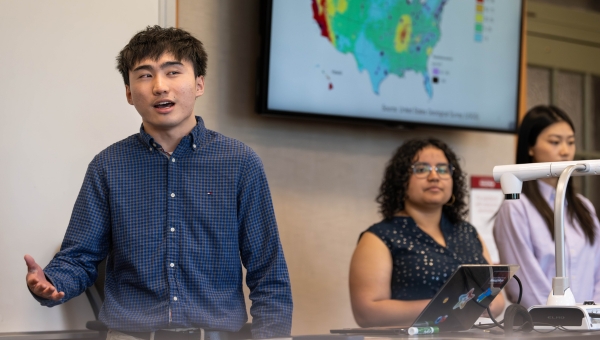Creating the tool posed some challenges for the students. Few earthquakes have struck the United States in recent years, so the team initially had little data to feed a predictive model. They decided to incorporate earthquake data from other countries but had to exclude those with different building regulations, architecture and seismic codes, as these factors can shape an earthquake’s impact on shelter needs.
With the help of the Red Cross, the team identified a few additional countries that are earthquake-prone and are similar to the U.S. across several metrics.
Working with the Red Cross
Prior to the capstone project, the Red Cross would rely on its experts to estimate shelter needs based on population information, maps and their previous experience responding to natural disasters. This approach, though, could lead to over-or under-estimating shelter needs.
Michael Whitehead, planning integration manager at the Red Cross, has sought for the nonprofit to take a more data-driven approach to responding to natural disasters. To improve the earthquake response process, Whitehead asked his team: “Why don't we get a bunch of really smart college kids, who don't know this is really hard, to work on a possible solution?”
The Red Cross met with the capstone team every other week. In the meetings, the students shared progress updates and discussed obstacles they encountered, and the Red Cross provided guidance. As the project’s point of contact, Fouad would meet briefly with one Red Cross staff member each week for additional support.
“A lot of our conversations involved the students talking about ideas, and then on our side, trying to figure out what was practical,” said Red Cross volunteer Louis Luangkesorn.

Sami Ouyang (MSPPM-DA '25) during the team's capstone presentation.

